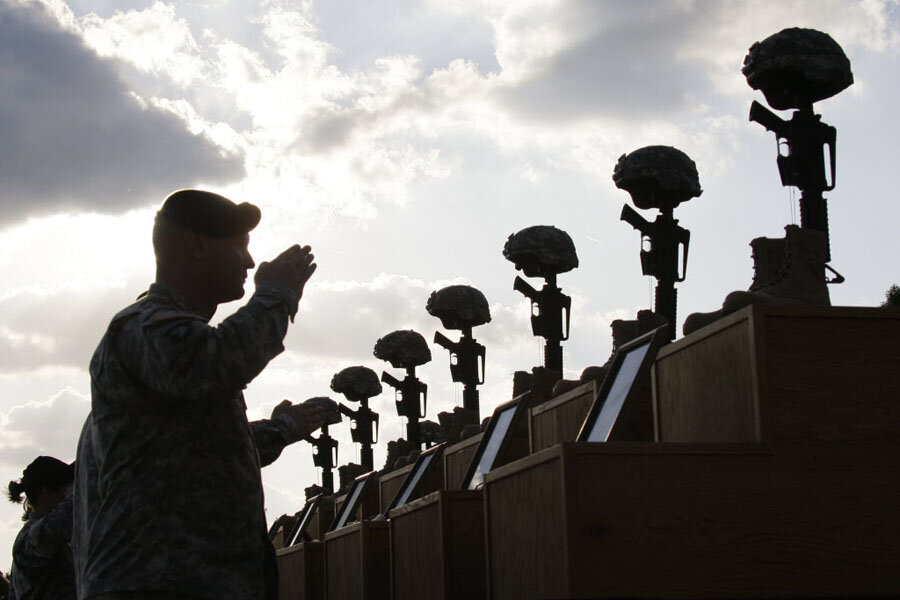Fort Hood shooting: why it took five years to award victims Purple Hearts
Loading...
| Washington
More than five years after psychologist Nidal Hasan, then a US Army major, went on a shooting spree killing 13 people and wounding 30 others, the military victims of his rampage received Purple Hearts in Fort Hood, Texas, Friday.
The medals were a long time coming. That’s because initially, the gunshot wounds sustained by the victims were considered “workplace injuries” by the Department of Defense.
It was a rider included in the 2015 defense budget that expanded the parameters for Purple Heart eligibility, reclassifying the victims' injuries as the result of an attack inspired by a terrorist group, rather than a workplace injury. Since its inception, the medal’s most basic requirement has been that recipients be injured at the hands of an enemy.
The medal ceremony this week, and the latest legislation that allowed the Purple Heart awards to move forward, reflect the new realities of war, says Phillip Carter, director of the Military, Veterans, and Society Program at the Center for a New American Security.
“We’ve entered a more complex era where we don’t just fight overseas, but at home, too,” he says. “There’s no principled reason to divide the victims of 9/11 from Fort Hood from some victims in Baghdad.”
Had, for example, an Al Qaeda-inspired attack occurred in Kuwait or Iraq, there might have been some brief debate that probably would have come to the same conclusion in far less time than five years, adds Mr. Carter, who served in the Army as a civil affairs officer in Iraq and is also an adjunct professor of law at Georgetown University in Washington.
Sgt. 1st Class Miguel Valdivia was shot three times by Mr. Hasan, who was convicted in 2013 of 13 counts of premeditated murder and sentenced to death.
While it “feels good” to know he is receiving a Purple Heart after years, Sergeant Valdivia also grapples with a “guilty feeling,” he told the Military Times.
“I only got wounded. Deep inside, I feel I don’t deserve it,” he said.
It’s a common feeling among many Purple Heart recipients. Victims of friendly fire, for example, are generally eligible for the medal because their injuries tend to be imputed to enemy contact.
The Purple Heart is one of the more venerated medals in the military inventory, and such awards matter within the fraternity of soldiers, Carter notes – providing a sense of community to those working through injuries through the Military Order of the Purple Heart and other organizations to which recipients of the medal can belong.
“It means a lot to get recognized with an award for a combat injury,” he says.
The ceremony at Fort Hood Friday served as a reminder, too, of other soldiers awaiting a verdict on whether they qualify for Purple Hearts. This includes US troops who were exposed to chemical weapons in Iraq.
Last month, the Army reversed a Purple Heart medal rejection and instead approved the medal for a soldier who had been burned by sulfur mustard gas in Iraq.
Other US troops were exposed to chemical weapons hidden by Iraqi insurgents in roadside bombs, and Undersecretary of the Army Brad Carson says he expects more medals to be awarded to these troops after further review.
“To me, the scandal is that we had protocols in place and the medical community knew what they were, and yet we failed in some cases to implement this across the [Iraq] theater,” he told The New York Times last month.
“That was a mistake, and I apologize for that. I apologize for past actions and am going to fix it going forward.”







